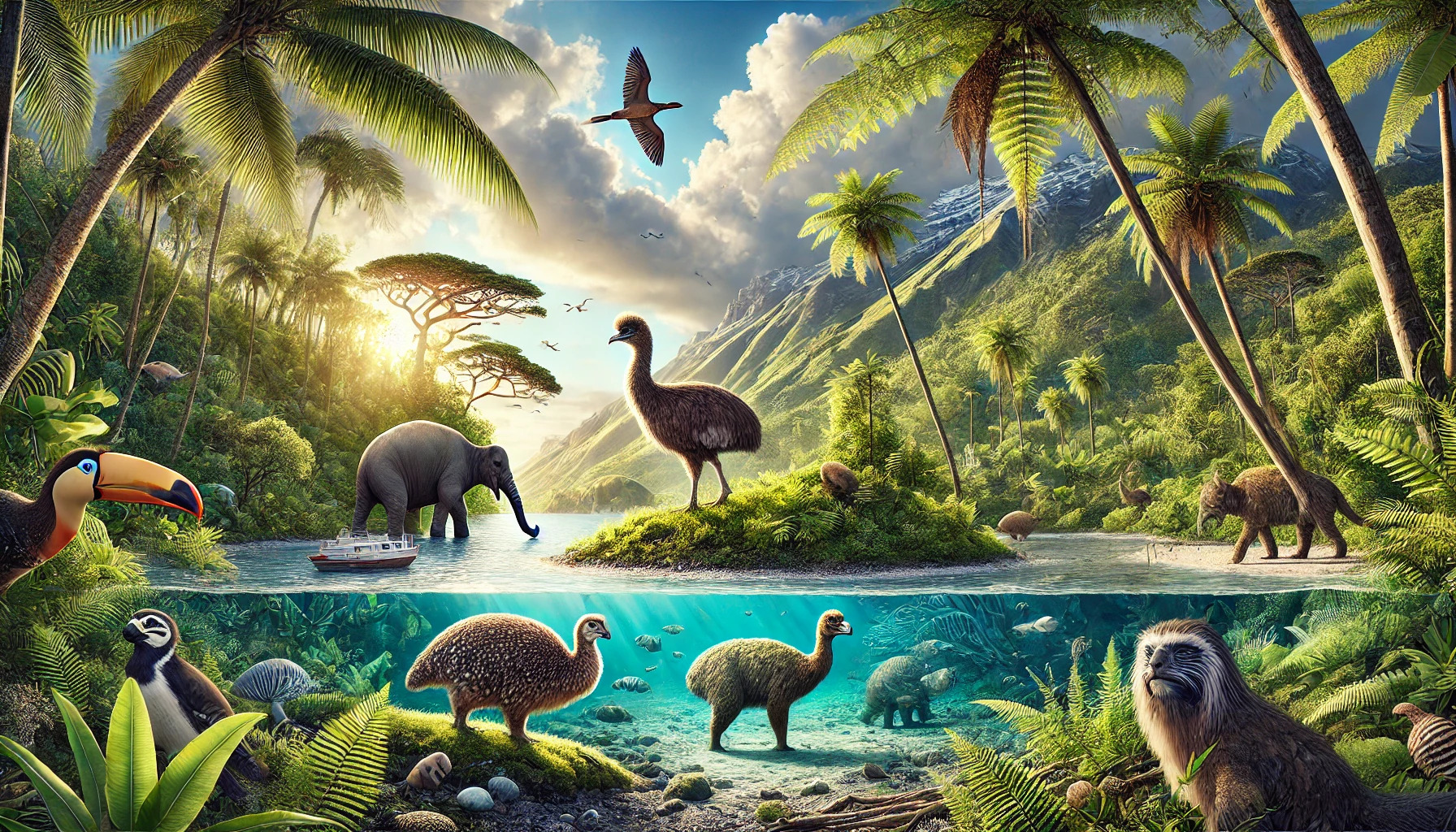Island ecosystems are fascinating environments that have shaped many unique species throughout history. These isolated habitats often led to extraordinary evolutionary paths, resulting in animals that could not be found anywhere else on Earth. The unique conditions of islands played a crucial role in the development and eventual extinction of distinct animals, highlighting the fragility of these ecosystems.
Many of the extinct species from islands, such as the giant lemurs of Madagascar, evolved in ways that took advantage of the limited resources and lack of predators. As these ecosystems faced changes due to human activity and environmental shifts, numerous species struggled to survive. Understanding how these island environments contributed to the rise and fall of unique animals is essential for grasping the broader impacts of isolation on biodiversity.
By examining the factors that led to extinction in island ecosystems, readers can gain insight into conservation and the necessary steps to protect existing species. The story of these extinct animals serves as a reminder of the delicate balance in nature and the importance of preserving our planet’s diverse habitats.
Fundamentals of Island Biogeography
Island biogeography studies how isolation affects species and biodiversity. It highlights unique evolutionary trends that occur when organisms are separated from mainland populations.
Isolation and Unique Evolutionary Paths
Isolation plays a crucial role in island ecosystems. When species become separated, they face different environmental challenges. This can lead to adaptive changes over generations.
This process results in unique evolutionary paths. For example, animals may evolve specific traits to thrive in their limited habitats. In some cases, this isolation can create entirely new species.
The balance between colonization and extinction is important. New arrivals may compete with existing species, while resources can be limited. This can shape the distinct biodiversity found on islands.
The Concept of Insular Dwarfism and Gigantism
Insular dwarfism and gigantism are fascinating outcomes of evolution on islands. These concepts explain how species adapt in size depending on their environment.
Insular dwarfism refers to larger species becoming smaller. Limited resources and space can make smaller sizes favorable. This helps animals survive in constrained habitats.
Conversely, insular gigantism occurs when smaller species grow larger. More resources and fewer predators can lead to this trend. Classic examples include giant tortoises and birds that evolved into larger forms on islands.
Both phenomena illustrate the impact of isolation. They highlight how unique environmental pressures shape the evolution of species in island ecosystems.
Historical Context of Island Extinctions
Island ecosystems have played a significant role in the extinction of unique animal species. The arrival of humans on these islands drastically impacted their delicate environments, while specific species became notable examples of this phenomenon.
Impact of Human Arrival and Activity
When humans arrived on islands, they brought changes that affected local wildlife. One major change was hunting. Humans often hunted large birds and mammals, leading to rapid population declines.
Additionally, habitat destruction occurred as people cleared land for farming and settlements. Introduced species like rats and pigs also contributed to the problem. They preyed on native animals or competed for resources, creating an even tougher environment for local species.
These human activities have often been linked to extinction events. Much of the unique wildlife found on islands has suffered due to these pressures. Heavily impacted areas show a clear pattern of loss and disruption.
Notable Extinct Island Species
Some species became famous examples of island extinctions. The Dodo, once native to Mauritius, could not survive human hunting and the introduction of non-native animals. It is often seen as a symbol of extinction.
The Great Auk, a flightless bird from the North Atlantic, faced similar challenges. Intensive hunting aimed at its feathers and meat led to its disappearance in the 19th century.
Other species include the Mauritian Giant Tortoise and various unique bird species across Pacific islands. These examples showcase how vulnerable island ecosystems can be, as changes brought by humans often lead to irreversible loss.
Adaptive Radiation and Niche Differentiation
Island ecosystems provide unique opportunities for adaptive radiation, where species evolve rapidly to fill different niches. This process leads to a variety of adaptations that enable species to survive in diverse environments.
Case Studies: Darwin’s Finches and Hawaiian Honeycreepers
Darwin’s finches are a classic example of adaptive radiation. Found in the Galápagos Islands, these birds evolved from a single ancestor into multiple species. Each species adapted its beak shape and size based on the food sources available, such as seeds or insects. This variation allowed them to thrive in diverse ecological niches.
Hawaiian honeycreepers also showcase adaptive radiation. These birds diversified from a single ancestor into many unique species, filling various roles in their habitats. Some honeycreepers have long, curved bills for sipping nectar, while others possess stout bills for crushing seeds. This specialization supports the rich biodiversity found in Hawaii.

